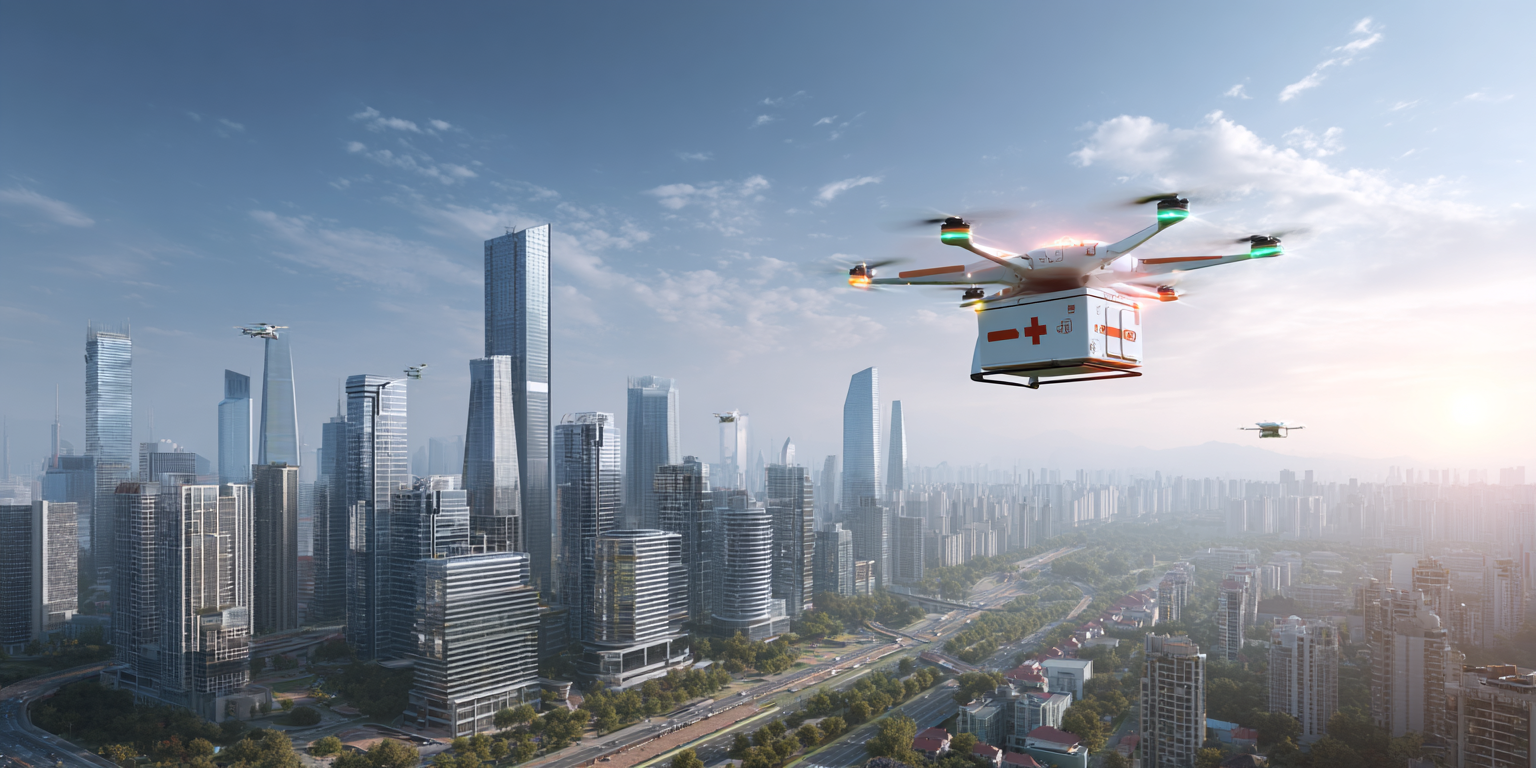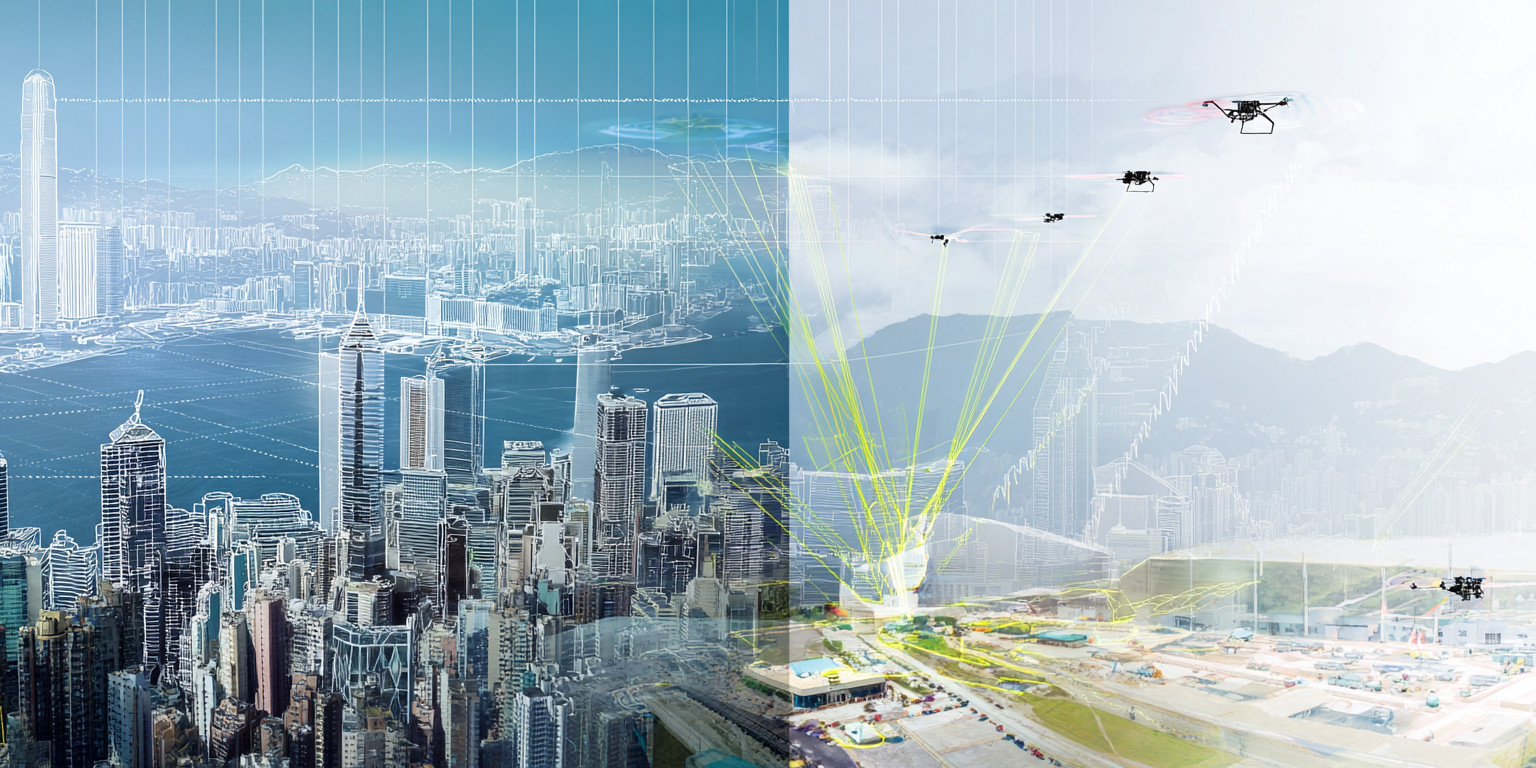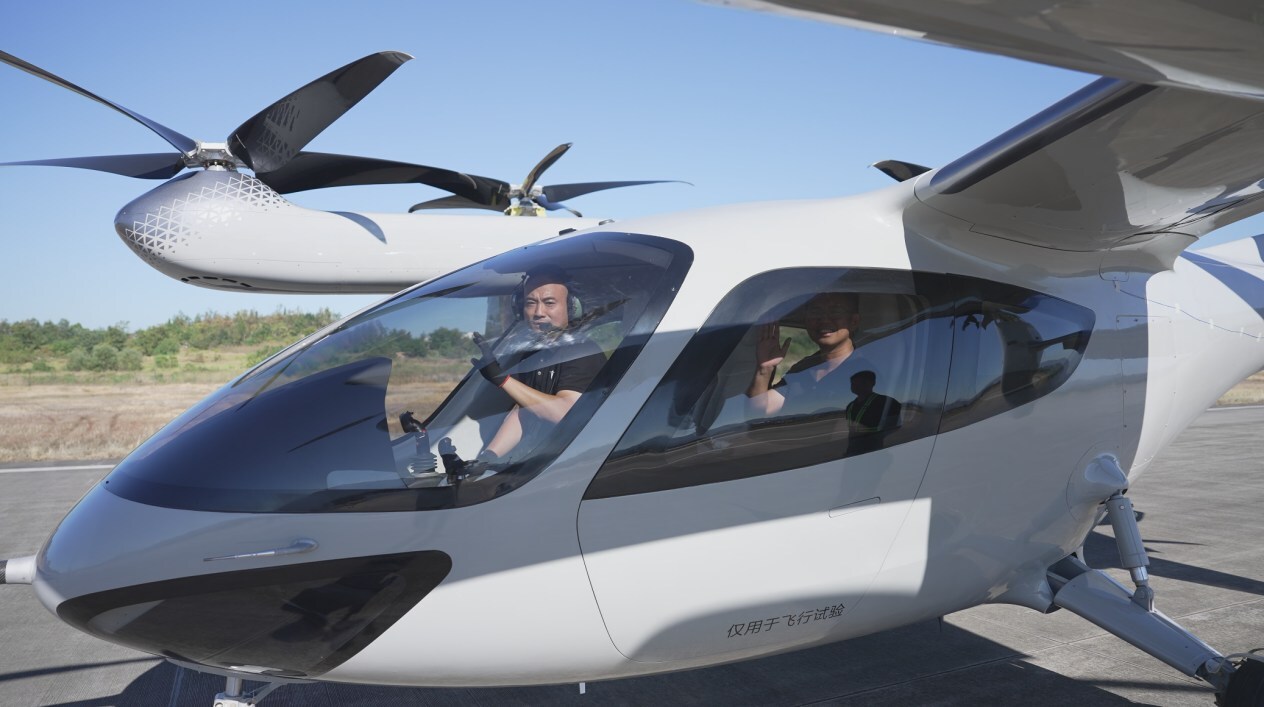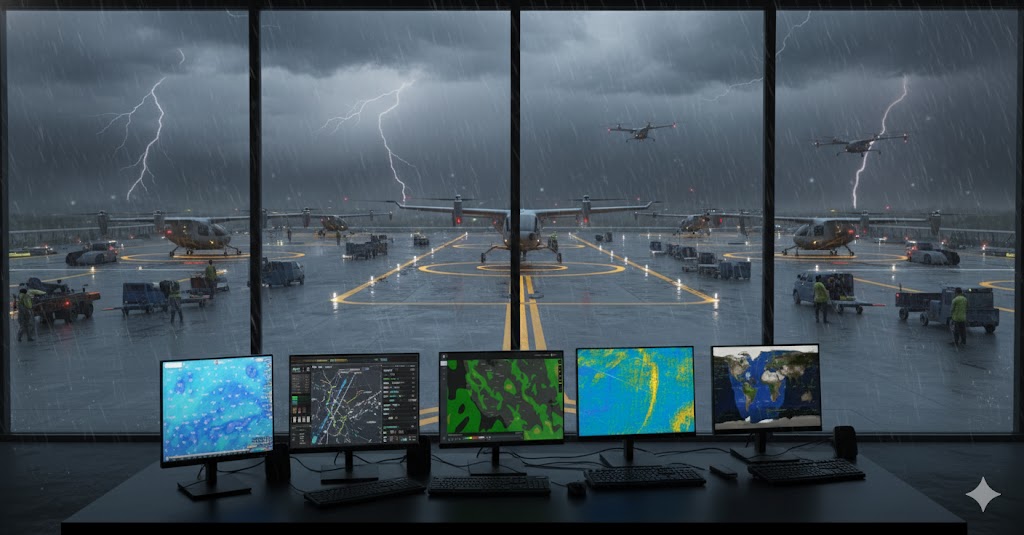Ten minutes. That’s how fast critical medications reach Mayo Clinic patients in Rochester. In Florida retirement communities, prescription drugs arrive without residents leaving home. Blood samples zip across North Carolina hospital campuses, completing more than 3,700 flights in a single year. These aren’t pilot programs or publicity stunts; they represent America’s emerging medical drone delivery infrastructure, a network that has quietly reached operational scale across multiple states.
Yet comparing American achievements with Chinese developments reveals an uncomfortable truth. Even in nations leading the way in drone technology, medical drone deliveries remain a tiny fraction of overall medical logistics, representing experimental operations rather than a systematic transformation of medical deliveries.
America’s Medical Drone Reality
Zipline leads American medical drone operations, having completed over one million commercial deliveries globally, with 70% of these occurring in 2023 and 2024 alone. The company operates across 11 US states, reaching more than 30 million people through healthcare partnerships that span from rural communities to major medical centers. Mayo Clinic’s Advanced Care at Home program utilizes Zipline’s Platform 2 drones to deliver medications and supplies to 2,600 patients across facilities in Florida and Minnesota. Each autonomous electric aircraft carries eight pounds of cargo across 10 miles, lowering packages from 330 feet using precision delivery systems.
Cleveland Clinic expanded drone deliveries across northeast Ohio in 2025, focusing on specialty medicines with plans to include lab samples, prescription meals, and medical supplies. Memorial Hermann Health System in Houston scheduled drone operations to begin in 2026, targeting the Texas Medical Center. Michigan Medicine expects to double its specialty pharmacy prescriptions through drone delivery, while Intermountain Health serves the Salt Lake City metro area with routine pharmaceutical drops.
UPS Flight Forward earned distinction as America’s first certified drone airline in 2019, receiving unlimited operational authority from the Federal Aviation Administration. The company completed over 3,700 medical flights at WakeMed Hospital in Raleigh by 2020, transporting blood samples and laboratory specimens across campus. During the COVID-19 pandemic, UPS delivered the first vaccine doses via drone in the United States, utilizing specialized cold-chain packaging that maintained temperatures between 2 °C and 8 °C.
The partnership between UPS and CVS brought prescription deliveries to The Villages, Florida’s largest retirement community, with 135,000 residents. Using Matternet’s M2 drones, the service operates under strict visual line-of-sight rules, completing deliveries within half-mile distances to support social distancing during the pandemic.
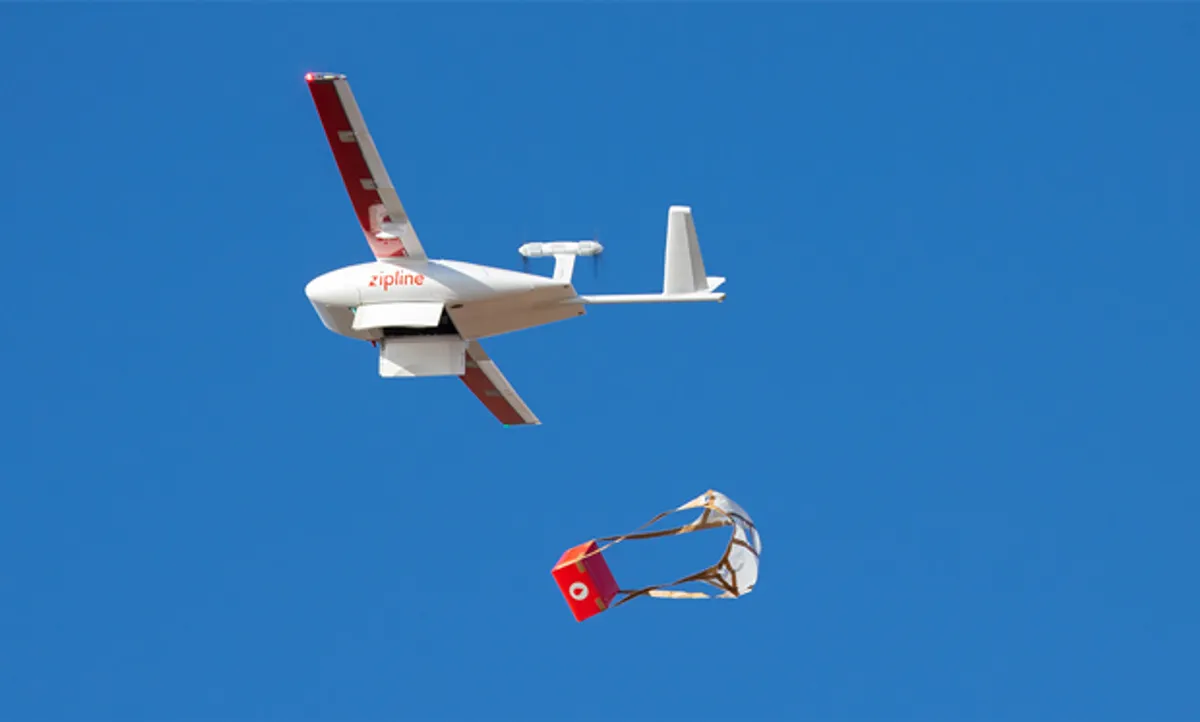 ZipLine drone delivering medical supplies in Rwanda
ZipLine drone delivering medical supplies in Rwanda
Research confirms the advantages of drones in specific scenarios. Studies in Rwanda have shown that drone delivery reduces blood product transport times by 79-98 minutes compared to road transport, while decreasing product expiry rates by 67%. However, even Rwanda's successful program, often cited as the gold standard, handles approximately 35% of the country’s blood supply through drone delivery. The remaining 65% still relies on traditional ground transport.
China’s Experimental Scale
China’s medical drone operations, while generating impressive headlines, reveal similar experimental limitations upon closer examination. Zigong city completed 5,270 medical flights by May 2025, with drones operating 70-80% faster than ground transport. These automated, cloud-controlled aircraft cruise at 72 kilometers per hour across 18-kilometer ranges, cutting hospital-to-hospital delivery times from 40 minutes to 11 minutes.
Chongqing’s emergency medicine delivery network connects the International Logistics Hub Park to Xinqiao Hospital, reducing critical drug transport from 45 minutes to 26 minutes while carrying up to 9 kilograms of materials. Tianjin operates dedicated blood transport routes between stations and hospitals, utilizing temperature-controlled medical boxes with real-time monitoring capabilities.

Yet Meituan, often cited as China’s drone delivery leader, illustrates the gap between perception and reality. The company secured China’s first nationwide low-altitude logistics operating certificate in April 2025, building on 450,000 completed deliveries since 2017. However, these deliveries predominantly involve food and consumer goods, not medical supplies. The 450,000 figure represents all drone deliveries over eight years, roughly 56 deliveries per day, while Meituan’s ground-based food delivery network processes over 60 million daily orders.
This reveals a striking truth: even in China’s “advanced” drone delivery ecosystem, aerial operations account for approximately 0.0003% of the total delivery volume. Medical applications constitute a smaller subset, primarily focused on emergency supplies and experimental routes, rather than routine healthcare logistics.
Infrastructure Investment and Market Realities
The infrastructure supporting these operations reveals fundamental similarities between American and Chinese approaches. America’s drone delivery market reached $245.4 million in 2023, projected to grow at a 22.3% annual rate to $1.9 billion by 2032. Individual companies build networks incrementally through healthcare partnerships, with Zipline claiming 100 million autonomous flight miles, equivalent to 200 round-trip flights to the moon.
China’s drone package delivery market was valued at $280 million in 2025, projected to reach $1.62 billion by 2031 with a 33.4% growth rate. The country’s medical fixed-wing drone market is expected to experience 24.4% annual growth from 2024 to 2030. Yet these projections reflect potential rather than current medical applications, with most operations remaining commercial food delivery services.
China established a Low-Altitude Economy Development Division within the National Development and Reform Commission in December 2024, prioritizing aerial logistics as essential for developing “new quality productive forces”. Nearly all Chinese provinces incorporated low-altitude economy development into local plans, with Shenzhen and Guangzhou emerging as national pioneers.
However, government investment doesn’t automatically translate to medical drone deployment. China’s comprehensive approach focuses on building infrastructure that supports medical applications, while American companies develop purpose-built medical networks with immediate operational capabilities.
The Scale Challenge
Both nations face identical challenges in scaling medical drone operations beyond experimental programs. Current drone technology excels in specific use cases, such as emergency deliveries, rural access, and campus transport, but struggles with the volume and variety of routine medical logistics.
Zipline’s Platform 2 system demonstrates impressive technical capabilities, operating in rain, wind, and extreme cold while maintaining delivery schedules during rush-hour traffic when ground transport faces delays. The system reduces emissions by up to 97% compared to traditional delivery methods, saving over 750,000 gallons of gasoline across operations. Yet these environmental benefits apply to a tiny fraction of medical deliveries.
Even the most successful programs handle a tiny fraction of overall medical logistics. Global drone deliveries increased by more than 80% from 2021 to 2022, reaching almost 875,000 deliveries worldwide. However, this number pales in comparison to the billions of packages delivered by traditional ground transport annually.
Regulatory Frameworks and Operational Constraints
American medical drone operations fight through complex Federal Aviation Administration requirements that choke rapid expansion. Each beyond-visual-line-of-sight flight needs Part 135 air carrier certification or special waivers. The proposed Part 108 rules from August 2025 could streamline operations for drones weighing up to 55 pounds, but it is unclear when implementation will actually occur. China streamlined its regulatory environment to boost low-altitude economy growth, with the Civil Aviation Authority introducing flexible airspace frameworks in 2023 that cut bureaucratic delays. All drones register under real-name requirements, but the system processes applications efficiently rather than creating bottlenecks.
Both regulatory approaches face identical core constraints. Current drone technology works best for high-value, time-sensitive, lightweight medical deliveries, which represent a valuable but limited slice of healthcare logistics. Routine medical supply chains demand volume, reliability, and cost efficiency that current drone systems can’t match. Regulatory frameworks affect operational speed and geographic coverage, but don’t change the economic barriers that limit drone deployment. Both countries operate medical drone programs measured in thousands of flights annually, while traditional medical logistics handle millions of daily transactions.
Market Growth Meets Economic Constraints
The global medical drone market is projected to hit $4.68 billion by 2032, growing at 15.3% annually, with North America and Europe leading the way through private healthcare partnerships, while China drives expansion through government infrastructure investment. American companies proved technical feasibility and built sustainable business models within existing healthcare systems. Zipline expanded beyond healthcare into food delivery partnerships with Panera Bread and Chipotle, demonstrating platform versatility. Meanwhile, UPS FlightForward’s cold-chain capabilities enable specialized pharmaceutical transport, extending far beyond basic delivery services.
Cost Economics Tell the Real Story
Comparative studies reveal that drones excel only in specific scenarios. For 30-minute delivery windows, drones cost EUR 1.00 per delivery while ground vehicles cost EUR 4.35, making aerial delivery economically attractive for urgent medical needs. However, for same-day deliveries, ground vehicles maintain a crushing cost advantage at EUR 0.14 compared to EUR 0.59 for drones. China’s comprehensive approach treats low-altitude operations as essential infrastructure rather than experimental technology, creating conditions for potential rapid scaling once economic and technical barriers are diminished. However, those barriers remain stubbornly persistent across both nations’ approaches.
The Reality of Medical Drone Impact
Medical drone delivery represents genuine innovation that addresses real healthcare challenges, particularly in rural areas and during emergencies. American networks serve millions of patients across multiple states with proven reliability and safety records. Chinese operations demonstrate a coordinated infrastructure development that supports thousands of routine medical flights.
However, both nations’ experiences reveal that medical drone delivery remains a specialized tool rather than a transformative technology. Even the most successful programs handle a tiny fraction of overall medical logistics, operating alongside rather than replacing traditional supply chains.
The question isn’t whether medical drone delivery will succeed; operational networks already serve critical functions in both countries. The challenge lies in realistic expectations about scale and impact. Drone technology excels in specific scenarios where speed, access, and environmental conditions favor aerial delivery. It struggles with the volume, variety, and cost requirements of routine medical logistics.
America’s medical drone network exemplifies technical excellence and sustainable business models that operate within regulatory constraints. China demonstrates coordinated infrastructure development and policy support for aerial logistics. Both approaches address genuine healthcare needs while acknowledging the fundamental limitations that keep medical drone delivery a valuable but niche component of modern healthcare systems.
